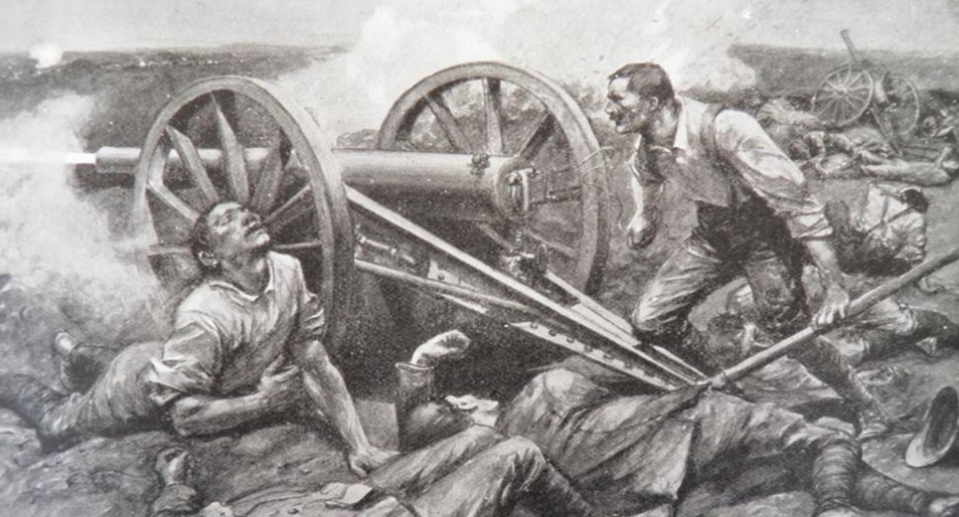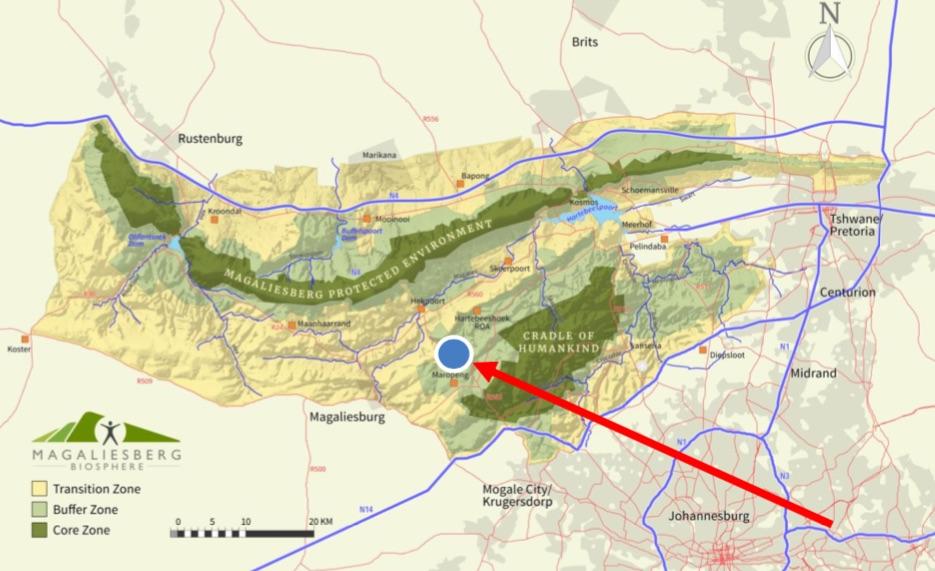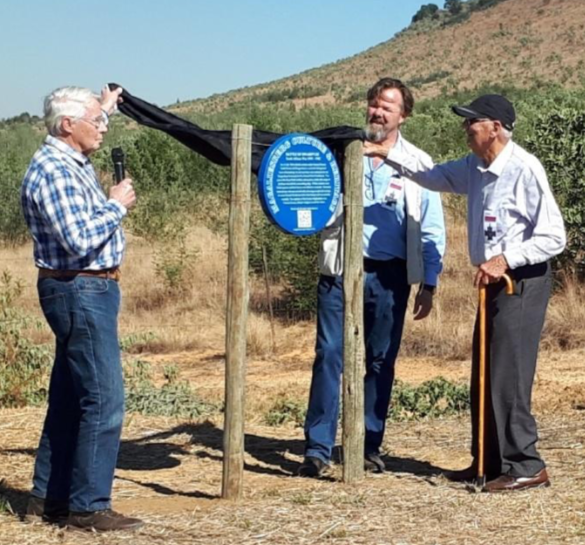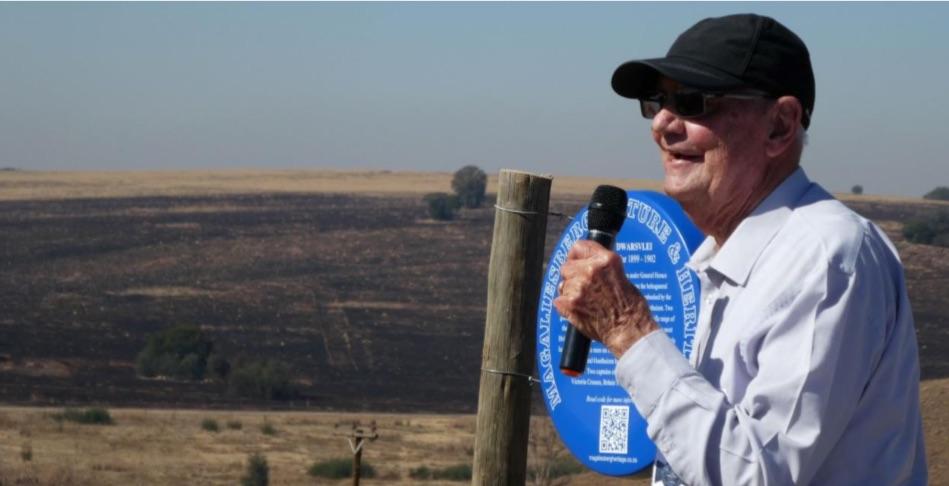
Disclaimer: Any views expressed by individuals and organisations are their own and do not in any way represent the views of The Heritage Portal. If you find any mistakes or historical inaccuracies, please contact the editor.
By June 1900 the British had occupied most of the large towns in the Transvaal Republic, but the Boers still controlled the Magaliesberg rural areas and Rustenburg was virtually besieged. On 11 July 1900 a column of mounted infantry and artillery under the command of Major-General Smith-Dorrien left Krugersdorp to clear the Boers from their Magaliesberg strongholds and relieve the pressure on Rustenburg. The column comprised 1300 men, mostly of the renowned Gordon Highlanders regiment, and further reinforcements from Rietfontein Camp were to join them at Hekpoort.
About 15 km outside Krugersdorp, close to the modern Maropeng Visitors Centre in the Cradle of Humankind, they were confronted by General Sarel Oosthuizen’s Krugersdorp Commando. Oosthuizen had already won fame for his leadership on the Natal battlefields, notably the capture of Winston Churchill, but this was to be the first engagement by re-recruited burgers who had already surrendered and taken an Oath of Allegiance.
Location of the Battle of Dwarsvlei in the Magaliesberg Biosphere Reserve
Oosthuizen chose his own farm, “Dwarsvlei”, to be the battlefield. It was an ideal place for an ambush where the Witwatersberg ridge overlooks an intersection on the Krugersdorp- Hekpoort road. He did not have a large force – some 750 men confronting a force twice its size – but he deployed them along the crests of the surrounding hills, and they waited in silence as the British marched towards them. When the column reached the intersection, the Boers opened fire.
The battle that followed was distinguished by extraordinary acts of courage on both sides. Smith-Dorrien’s artillery galloped forward into a gap between two koppies near the top of the ridge, but Boer riflemen held the high ground on either side of them. Within half an hour 14 of the 17 gunners had been hit and their horses were shot down in their harnesses. Wounded men lay trapped behind hastily constructed sangars.
The section commander, Lieutenant Turner, who was wounded three times, continued to fire the guns alone (see main image). Later, Captains W.E. Gordon and D.R. Younger of the Gordon Highlanders each won a Victoria Cross for attempting to manhandle the guns to safety. Corporal J.F. Mackay, who had already won a VC two months previously, was also recommended for decoration for carrying the mortally wounded Younger out of the firing line.
Vincent Carruthers, Rory Taylor and Okkie Ooshuizen unveil a blue plaque for the Battle for Dwarsvlei
The battle continued all day with the Gordon Highlanders holding off heroic Boer attempts to capture the guns and wagons. At dusk General Oosthuizen led a final and desperate charge against the guns. Just a few metres from his objective he was mortally wounded and died some weeks later. With the loss of their leader the Boers fell back and once it was dark, the British managed to limp back to Krugersdorp.
Okkie Oosthuizen, great grandson of General Sarel Oosthuizen, unveiling the Blue Plaque on a temporary stand on the Battlefield
The graves of Sarel Oosthuizen and Captain Younger lie a few metres apart in the Krugersdorp cemetery. Besides the Blue Plaque, no other monument commemorates the site where the Boers lost one of their most gallant generals and where two British soldiers won their country’s supreme decoration for valour.
About the author: Vincent Carruthers has written several books including The Magaliesberg (four editions), Cradle of Life (2019) and The Wildlife of Southern Africa (three editions). In 2006 he initiated the project to have the Magaliesberg region declared a UNESCO Biosphere Reserve. He has received awards from various institutions including the University of the Witwatersrand Gold Medal in 2016 and the North West University Chancellor’s Medal in 2013. He has been CEO of WESSA, chairman of Birdlife South Africa and member of the North West Parks and Tourism Board. Currently retired from his management consultancy, he is enjoying writing for the Magaliesberg Association for Culture and Heritage.
Further reading on the Battle of Dwarsvlei
- Amery, L.S., ed. The Times History of the War in South Africa: 1899-1902. Vol IV. London: Sampson Low, 1906. - A comprehensive, seven-volume history of the entire South African War that allows the reader to see the Battle of Dwarsvlei in the broader context of the war as a whole.
- Milne, R., The Battle of Dwarsvlei 11 July 1900. Privately published, 2019. - An illustrated account of the battle presented on the occasion of the unveiling of the Blue Plaque.
- Smith-Dorrien, H., Memories of forty-eight years' service. London: J. Murray, 1925. - A first-hand account of the battle with diagrams and maps. Copies are difficult to find.
Comments will load below. If for any reason none appear click here for some troubleshooting tips. If you would like to post a comment and need instructions click here.



